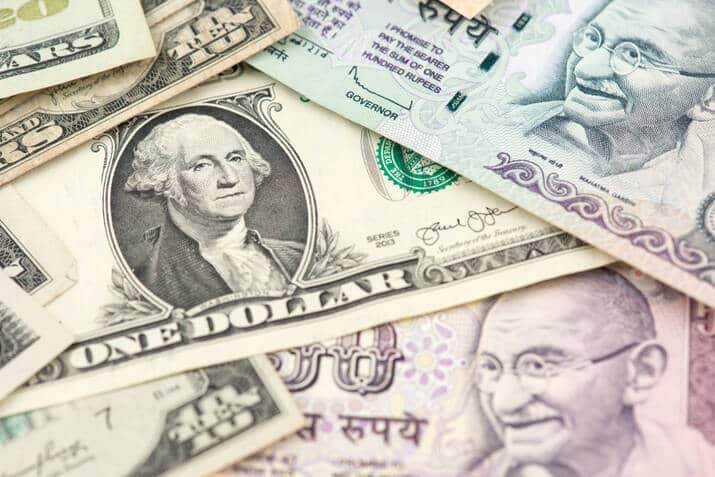
Rupee Edges Up Two Paise to Rs 83.38 vs Dollar
Quick Look:
- The rupee slightly appreciates to Rs 83.38 against the dollar amidst the dollar’s rise.
- Stability against a strong US dollar, with trading expected between Rs 83.26-83.47.
- Global trends and high Brent crude prices impact the Rupee’s valuation.
- Domestic policies and global market dynamics present challenges for the Rupee.
- Focus on Indonesia’s economic policies and their effects on the currency market.
In the constantly evolving realm of global finance, the Indian Rupee’s performance against the US dollar presents a narrative of resilience and challenge. The US dollar index scales new heights, reaching a peak not seen in over four months. The Indian currency’s response reveals the intricate dance of economic indicators, market sentiments, and geopolitical shifts. Here’s a closer look at the Rupee’s journey amidst these financial currents.
A Steady Start Amidst Dollar Dominance
Tuesday’s trading session witnessed the Indian Rupee opening with marginal change, appreciating by a slight two paise to stand at Rs eighty-three point thirty-eight against the greenback. This minor adjustment follows its previous close at Rs eighty-three point forty to a dollar, underscoring a cautious optimism in the market. Analysts from Reliance Securities Ltd. anticipate the Rupee to fluctuate within the narrow confines of Rs eighty-three point twenty-six and Rs eighty-three point forty-seven throughout the day.
This period of relative stability, however, unfolds against the backdrop of a surging US dollar index, which has broken past the critical resistance level of 104.85, aiming for the 105.60 mark. Kunal Sodhani, vice president of Shinhan Bank, attributes this rally to reduced bets on Federal Reserve rate cuts. This is bolstered by optimistic reports from ISM and S&P Global that have, in turn, propelled US Treasury yields and the dollar index to new heights. Amidst this, Brent crude prices also tread an upward path, adding another layer to the complex currency valuation dynamics.
Global Influences and Domestic Concerns
International influences significantly shape the Rupee’s path. Specifically, the depreciation of the yuan and a strong demand for dollars stand out. These factors mirror larger trends, including dividend repatriation and foreign outflows in the bond market. Edi Susianto, Bank Indonesia’s executive director for monetary and security asset management, notes that these aspects pressure the currency’s performance.
On the domestic front, President-elect Prabowo Subianto’s policies have ignited discussions. His ambitious $29 billion plan to provide free lunches and milk to schoolchildren is a focal point. Traders are notably anxious about how this could impact Indonesia’s budget deficit. Moreover, there’s concern about the potential risks to its investment-grade credit ratings. These extensive spending plans highlight the challenging balance between promoting social welfare and maintaining fiscal discipline.
The Road Ahead: Monitoring Key Indicators
As investors and market participants cast a wary eye on the horizon, the focus intensifies on Indonesia’s current account deficit. It saw a $one point three billion expansion in the last quarter of the previous year. Additionally, the narrowing trade surplus in February, hitting a nine-month low of $eight hundred sixty-seven million amidst a downturn in commodity exports, signals potential volatility ahead.
The Indian Rupee’s performance amidst a strengthening US dollar and volatile global markets highlights the intricate interplay of economic forces. As the financial landscape continues to shift, the Rupee’s path will be shaped by both domestic initiatives and external pressures.




